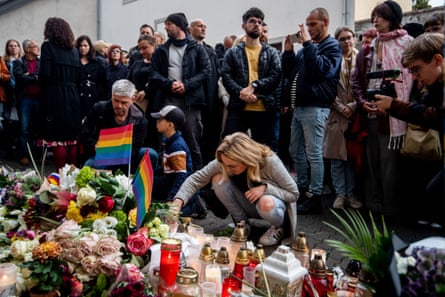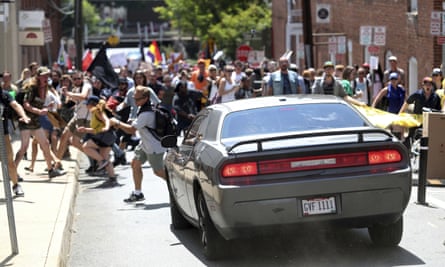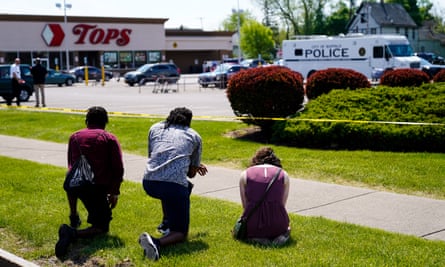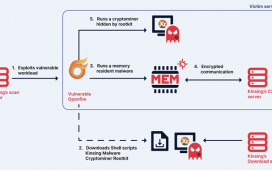The October evening was warm and sunny. At about 7pm, two young men stepped out of the Tepláreň bar on Zámocká Street in the centre of Bratislava, to sit on a concrete bench and drink lemonade. Matúš, 23, had just arrived in the Slovakian capital to study Chinese. His 26-year-old friend worked in a local clothes shop and enjoyed anime, K-pop and dance.
Standing in an alcove a few metres away was Juraj Krajčík. The 19-year-old had been loitering for about half an hour, witnesses later said. Shortly after the two patrons of the Tepláreň sat down, Krajčík stepped forward, raised a .45-calibre handgun and fired several shots at them. Then he turned and ran, gun in hand.
Within half an hour of the fatal shootings, Krajčík was on his phone. At 7.35pm, he sent a tweet: “#bratislava #hatecrime #gaybar #bratislava”. Then, 25 minutes later, another: “#bratislava feeling no regrets, isn’t that funny?”
Through the night, Krajčík moved across the city, always one step ahead of police and continually active on social media. On Twitter and message boards routinely used by rightwing extremists, he expressed disappointment that he had not carried out his plans to attack a synagogue and the residence of Slovakia’s prime minister. Then he posted an image of himself with the words “have a last selfie”.
The teenager ended up on a grassy hill in a park not far from his family home where, probably in the early morning, he shot himself. His body was found some hours later.
In Slovakia, the attack on the Tepláreň, a prominent if rare LGBTQ+ hangout, prompted shock and statements of concern. The president, Zuzana Čaputová, called on politicians to stop spreading hate.
“I’m sorry that [we were] not able to protect your loved ones,” she told a crowd of thousands at a vigil. “You belong here; you are valuable for our society.”
The Tepláreň was “a place of acceptance, of love, of happiness”, said Michaela Dénešová, the deputy head of the Inakosť initiative, which campaigns for LGBTQ+ rights in Slovakia. “They were young people. They did nothing wrong. They were just enjoying the evening with friends in a bar. That’s all. Because of their gender identity, because of their sexual orientation … Should we kill people because of that? Not at all.”

Elsewhere, the attack attracted little attention, perhaps because the death toll was comparatively low for such shootings, or because it appeared to be motivated by local factors with limited wider significance, or perhaps because it seemed to be the act of single deranged individual.
In fact, there was no evidence that Krajčík had a psychological illness or was a lone actor. Instead, it has become clear that he was a link in a chain of mutually inspired young men living thousands of miles apart, all fervent believers in a violent ideology that first gathered momentum in the US and is now spreading in Europe.
Evidence seen by the Guardian suggests Krajčík may have been helped – possibly even piloted – by an older extremist based in the US who has yet to be identified and could even now be working with a new potential attacker.
Fifteen months after the Bratislava murders, levels of rightwing extremist violence directed at minorities in Europe continue to concern authorities everywhere.
In November, police launched an international operation against rightwing terrorism in Belgium, Croatia, Germany, Lithuania, Romania and Italy. Five were arrested, suspected of recruitment, online propaganda and sharing manuals of 3D-printed weapons.
In the EU, there were 45 arrests and four attacks in 2022, according to a recent Europol report. Three more were foiled, two in France and one in Germany.
“The threat from rightwing terrorist lone actors, radicalised online, remain[s] significant,” the report noted.
Krajčík grew up in Bratislava’s affluent Kramáre district, a quiet young man who did not smoke or drink and spent weekends with his family. He attended an elite private school in the city, where he had few friends. Though known for angry outbursts, he gave no hint of any extremist views.
Some local media blamed any extremism on his father, a self-employed businessman who was a minor figure in the now defunct rightwing Vlasť (Homeland) party. It promoted a populist, nationalist, nativist vision and accused corrupt “mainstream” elites of having an agenda to weaken Slovakia by allowing its control by organisations such as Nato or the EU. Before parliamentary elections in 2020, Vlasť deployed anti-LGBTQ+ rhetoric, describing sexual minorities as “sick”, “decadent” or “perverted”.
But there is no suggestion that Krajčík’s family knew of his increasing radicalism or of his plans for an attack. Vlasť’s leaders were officially opposed to violence. The catalyst for Krajčík’s attack appears to have come from farther afield. When in April 2021 he signed up to Twitter, he almost immediately began to express extreme racist ideas that had little relevance to his life in Bratislava.
“American culture is centered around n [sic] … They killed hundreds of thousands of white men to free n. They listen to n music. They elect a n as president. They dress and act like n. They draw the entirety of their modern culture from n,” Krajčík claimed early on.
More locally focused invective targeting Jewish, LGBTQ+ and Roma communities followed, but a persistent transatlantic influence remained evident. It seems, however, that Krajčík had not yet formulated ideas of launching a violent attack himself. This would come later, when, once again, he was apparently inspired by events and ideas far away.
While Krajčík was tweeting, a teenager in Glossop, a market town in England’s picturesque Peak District, was uploading a series of videos and blogposts to an easily accessible online platform. Daniel Harris was a troubled loner who spent up to 14 hours a day online and whose extreme views had already led to a referral to the UK government’s Prevent programme, which aims to counter radicalisation and is now dealing with rising numbers of young men attracted by rightwing extremism.
Between February 2021 and March 2022, Harris uploaded five videos praising rightwing extremist mass murderers and calling for an armed uprising. One video focused on Brenton Tarrant, who killed 51 people at two mosques in Christchurch, New Zealand, in March 2019. A viewer commented: “This video has moved me. I was on the fence – now I am committed to my race.” An 18-year-old in Conklin, New York, posted encouragement: “You are not alone my friend.”
Experts say such contacts are an integral part of the rightwing milieu. Alejandra Ruvinsky, senior analyst at CST, a charity that protects British Jews from antisemitism and related threats, said: “This is absolutely global, because it is encouraged and inspired by a network that is all online. When we are tracking these people, it is very difficult to find out where they are from. They could be anywhere in the world. So this means that an attack in Bratislava doesn’t mean there is a critical mass of neo-Nazis in Slovakia. It means there is a critical mass of neo-Nazis around the world.”
These online communities have allowed the rapid spread of the “great replacement” conspiracy theory, a set of paranoid lies and delusions claiming that white people are being economically, politically and culturally overwhelmed by the demographic rise of other communities. Many also falsely believe that feminism is a tool to undermine birth rates of the “white race” and see progressive efforts to fight homophobic prejudice or restrictive laws on homosexuality as part of a similar plan.
Such falsehoods inspired the Christchurch attack as well as many of the most horrifying recent acts of white supremacist violence in the US. Far-right protesters at the 2017 Unite the Right rally in Charlottesville, Virginia, which led to the killing of a woman, chanted: “You will not replace us.” The online rants of mass murderers who have attacked synagogues, an LGBTQ+ club and other targets in the US have repeated the same slogans in various forms. One who killed 23 people at a Walmart in El Paso, Texas, in 2019 claimed his murderous rampage was “a response to the Hispanic invasion of Texas”.
after newsletter promotion

In the US and Europe, far-right politicians have made statements clearly showing the influence of this twisted thinking.
The most extreme adherents aim to use violence to speed what they believe is the inevitable collapse of supposedly “corrupt and decadent” democratic societies. Attacks that exacerbate social tensions will eventually lead to a “racial” war that will bring white supremacists a final victory, they believe.
This strategy, known as accelerationism, thrives on anonymous and almost entirely unmoderated social media such as Telegram’s Terrorgram channels and the 8chan message board where users exchange texts and videos explaining their strategy, indulge in hate-filled extremist commentary and mock those unwilling to take action themselves.
This has catastrophic impacts, experts say. “The notion of a distinction between online and the ‘real world’ has long gone,” said Meghan Conroy, a research fellow with the US-based Atlantic Council’s Digital Forensic Research Lab.
The most recent Europol report on terrorism said: “Right-wing extremist ideologies and groups from the USA continue to represent an important influence on European right-wing extremists, especially through online communities.”
In May 2022, two months after commenting on Harris’s video that he was “not alone”, Payton Gendron drove for three hours and then shot dead 10 Black people in a racially motivated attack in a supermarket in Buffalo, New York. His own manifesto used an image posted by Harris, who was arrested by British police within 48 hours of the killing.
Gendron’s attack provoked feverish excitement among rightwing extremists. In Bratislava, Krajčík felt it was “the final nail in the coffin” that “gave new inspiration, a new impulse to do what had to be done after years of procrastination”.

On 26 September 2022, Krajčík posted a thread on Twitter outlining the challenges facing anyone who was prepared to commit extreme violence to “fight for the white race”. Other tweets called for the extermination of Jews or complained about the number of immigrants in Slovakia. One called for a war in the cities against decadence and “racial enemies”.
On 10 October, he tweeted images of “heroes and role models” including Hitler, Tarrant and Gendron. At 9am on 11 October, he tweeted that he had “made [his] decision”, and a day later he posted: “It will be done.” The next evening, Krajčík took a handgun legally owned by his father from a safe in his home and headed to the Tepláreň bar.
Not long before his attack, Krajčík tweeted a link to anonymous filesharing sites where he had posted a 65-page document. This “manifesto” was similar to that uploaded by Gendron and other rightwing attackers. It outlined its author’s view of the world, the toxic influence of the “great replacement” conspiracy theory and the identity of his principal enemy. This was not the LGBTQ+ community. The manifesto’s opening line read: “It’s the jews it’s the jews its the jews.”
Extreme-right conspiracy theories often accuse Jewish people of promoting LGBTQ+ rights in order to destroy the perceived nuclear family unit and lower white birth rates, analysts said. “It’s not just Jewish communities which are victims of antisemitism. For a lot of [shooters], attacking an LGBTQ+ bar is also a means of attacking Jewish people. So the threat to one community becomes a danger to many others,” said Hannah Rose of the UK-based Institute for Strategic Dialogue.
Krajčík’s manifesto falsely claimed the world was run by “Zionist Occupied Government” and provided a lengthy list of “ZOG” targets that ranged from politicians, journalists and judges to Hollywood, pornography studios, “the Rothschilds” and “invasive non-Whites”. It also blamed Jews for supposedly plotting against “our people, our Race” by encouraging mass immigration of “enemy races”, supporting the civil rights movement in the US and manufacturing Covid vaccines.
Joe Mulhall, the director of research at the antifascism organisation Hope Not Hate, said such poisonous ideas inevitably led to wider violence. “One of the things that is so dangerous about conspirational antisemitism is that it can be used to justify almost any action,” he said. “Whatever the target, the core of the ideology seems to be antisemitism.”
Krajčík also left a suicide note addressed to his parents, sister and an unnamed woman or girl referred to as “Her” whom he “never had the courage to tell” of his sentiments. Seen by the Guardian, the note is conventional. He thanks his parents for everything they have done for him and tells them he will be waiting for them “on the other side, wherever that could or could not be”. The note reiterates his choice of the “path of struggle against the jewish enemies and their collaborators” and adds a more personal note describing his sorrow that he “won’t be alive long enough to see the world after the enemy has been defeated”.
Julia Kupper, a US-based forensic linguist specialising in targeted violence and terrorism attackers, who analysed the tweets, suicide note and manifesto, said: “There are explicit references [in the manifesto] that demonstrate an almost unprecedented understanding of the accelerationist scene and concepts compared to previous manifestos authored by similar attackers, and it appears unlikely that [Krajčík] would have gained that level of familiarity in such a short time.”
Kupper ran a check against an extensive archive of manifestos to rule out systematic cutting and pasting as she sought to resolve the mismatch between the “author profile” of a 19-year-old Slovak who had never lived abroad and the language used in what he had supposedly written. Kupper focused on stylistic inconsistencies such as varying date formats or spellings, and the repeated use of idioms or vocabulary that seemed to suggest an author who was possibly in his 40s or 50s and based in the US.
“We suspect there was a second author who took on a ‘command and control’ role from around May 2022, but we don’t know who this was or where at this point in time,” Kupper said.
Slovakian officials who have studied local extremism on- and offline confirmed the stylistic mismatch and said the idea of a second author was “very plausible”.
Experts at the Accelerationism Research Consortium, which brings together leading experts studying the activities, behaviours and ideologies, describe “a distinct global and transnational security threat to democratic societies that defies conventional counter-terrorism mechanisms and programs”.
Until now, the sordid and angry world where such ideas thrive has been largely chaotic and unstructured, on- and offline. If a more experienced activist did influence Krajčík directly, a new form of militant rightwing activism may be emerging.
“This would be an evolution of the Terrorgram community away from just incitement towards something much more organised in terms of instigating and preparing violence,” Kupper said. “And this is frightening.”











